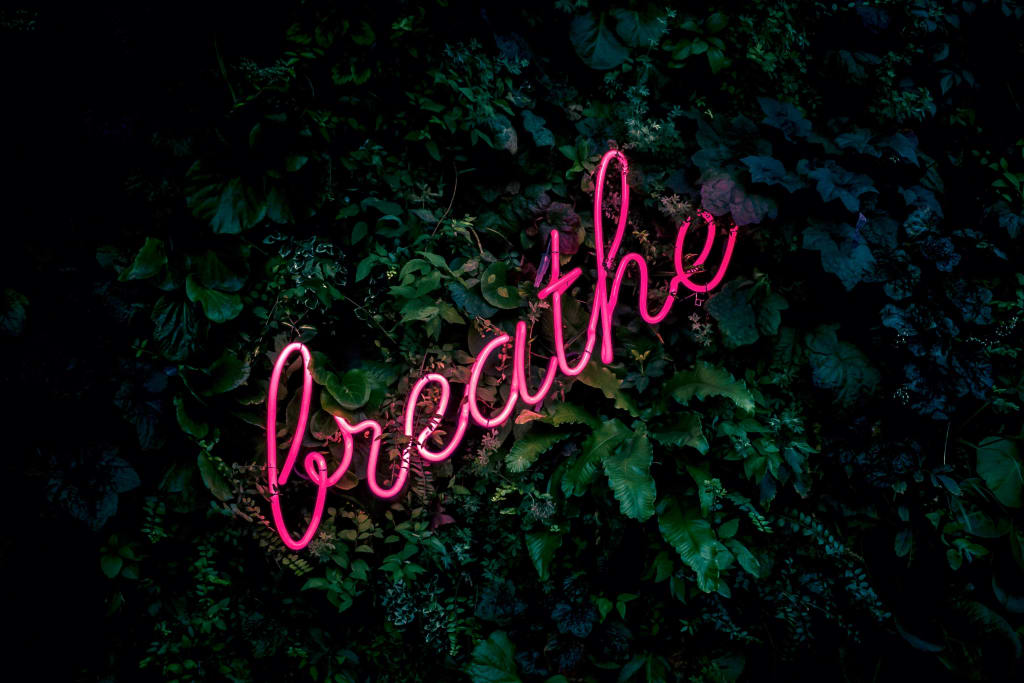In Times of Stress, Breathe
Tapping into our breath to relieve feelings of stress

Breathe. It is easy to be overwhelmed by fear in times of uncertainty. As Covid-19 sweeps the globe, many people find themselves being overwhelmed by stress. Stress and fear about contracting the virus, about losing their job, running out of food....and even running out of toilet paper. But constant stress can wreak havoc on our mental and physical health and our waistline.
Hans Selye and General Adaptation Syndrome
Hans Selye was an endocrinologist who experimented on rats to see how their bodies would respond to stress. He subjected rats to various types of stress (cold temperatures, toxins and excessive physical activity). He discovered that the rats went through certain physiological changes as a result of this stress.
In the first stage, termed Alarm Reaction, the amygdala (which is responsible for processing emotions) perceives a threat. It then sends a distress signal to the hypothalamus. The hypothalamus then activates the sympathetic nervous system (the part of the nervous system responsible for the fight or flight response) which sends messages to the adrenal glands to release adrenaline. Adrenaline then activates all the physiological changes for the 'fight or flight' response. The heart beats faster. Blood is shunted away from the digestive system and shuttled to the muscles, heart and other vital organs. Blood pressure and pulse rate both go up. The rate of breathing increases. Extra oxygen is sent to the brain. The senses become sharper. Glucose and fats are released into the bloodstream, giving the body extra energy.
Once the initial flood of adrenaline begins to go down, the HPA axis is activated in order to keep the body on high alert. The hypothalamus releases corticotropin-releasing hormone which travels to the pituitary glands which then release adrenocorticotropin hormone which then travels to the adrenal glands and spurs them to release cortisol. This hormone is what keeps the body in 'fight or flight' mode, ready to respond to any perceived threat.
During the second stage, called the Resistance stage, the parasympathetic part of the nervous system (responsible for calming the body down) attempts to restore homeostasis (balance in the body). Some of the stress hormones go down but the blood pressure remains high and there is a high level of glucose in the blood.
The last stage is exhaustion. If the body remains in a state of high alert, its resources can be depleted, exhaustion and deterioration can set in. This often sets the stage for illness or chronic fatigue. Mentally, this can also lead to feelings of depression. The body needs to rest and recover and it will use illness or depression in order to accomplish that. If you attempt to 'power through', it can lead to chronic illness or fatigue.
Problems with continually activating the HPA Axis
If low level stress (or repeated high level stress such as living in an abusive situation or through a war or pandemic) keeps the HPA axis activated, the body can suffer from persistent increases in stress hormones. Continual increases in adrenaline can lead to heart attacks or strokes. Cortisol helps replenish the body's energy stores when they have been depleted but can also lead to weight gain and build-up of fat tissue. It is important to learn how to decrease stress (or the body's response to it) by taking certain steps to activate the parasympathetic nervous system.
Breathing Exercises
Deep breathing is one of the easiest ways to activate the parasympathetic system. Using breath work, you can calm your body and your mind and help restore your body to a state of healing. There are numerous types of breathing exercises that can be effective. Here are a few to get you started.
Diaphragmatic Breathing
This is one of my favorite breathing exercises. Also known as belly breathing, you can do this sitting up or lying down. Place one hand on your chest and one on your belly. Inhale slowly through the nose and allow your belly to fill with air. Then exhale slowly through the mouth. If you want to focus into your breathing, allow the sides of your belly to fill with air and then the front, then allow your chest to gently fill with air (don't force your chest out while it expands). Then breathe out through the mouth. Allow your chest to deflate first, then the front of the belly and then the sides.
Do a series of ten breaths and feel your body and mind start to relax.
Yoga Breathing
Start by closing your right nostril with your thumb and inhaling through your left. Then close your left nostril with your ring finger and exhale from your right. Keep your left nostril closed, inhale from the right. Then close the right nostril and exhale from the left. Keep switching sides and feel your focus increase.
Lion's Breath
Breathe in deeply through the nose. When you exhale, close your eyes, tilt your head back, stick out your tongue and breathe out through the mouth. Feel all your stress and anxiety leaving your body through your exhale.
4-7-8
Exhale through the mouth. Then with your mouth closed, inhale through your nose for a count of four. Hold your breath for seven counts. Then exhale for eight counts. Repeat at least three times and feel your body unwind.
Practice these breathing exercises whenever you feel stressed and allow your body and mind to return to a relaxed state. With consistent practice, you will find yourself able to easily deal with feelings of overwhelm and stress.
About the Creator
Jenny Beck
I am a chiropractor, health advocate and advocate for the Deaf and Hard of Hearing community. I love to travel and spent several years working overseas in Indonesia and Ghana. @aslchiro- Instagram






Comments
There are no comments for this story
Be the first to respond and start the conversation.